Reproduction
In reproducing a historical bodice, allowances must be made for materials that are no longer available. Though the original bodice is constructed with a wool/linen blend, wool and linen are less often blended together, as wool is not worn for summer attire in lieu of modern synthetics. So, for the reproduction, the bodice is constructed with a modern light-weight wool, omitting the crisp quality of the linen. For the yoke, the modern crepe has a similar texture but is not as shiny as the historical garment. Cotton cutwork is still produced by machines but are typically geometrically symmetrical. For the reproduction, the cutwork is changed out for a Guipure lace, to emulate the asymmetrical floral design in the original bodice and maintain a similar proportion of open space between the flowers. The last area the fabric differs from the original is the collar. To keep the unity of the design, the same ribbon used to cover the yokes and hem, is used to create the collar.
Figure 1: Front |
Figure 2: Side Back |
Figure 3: Back |
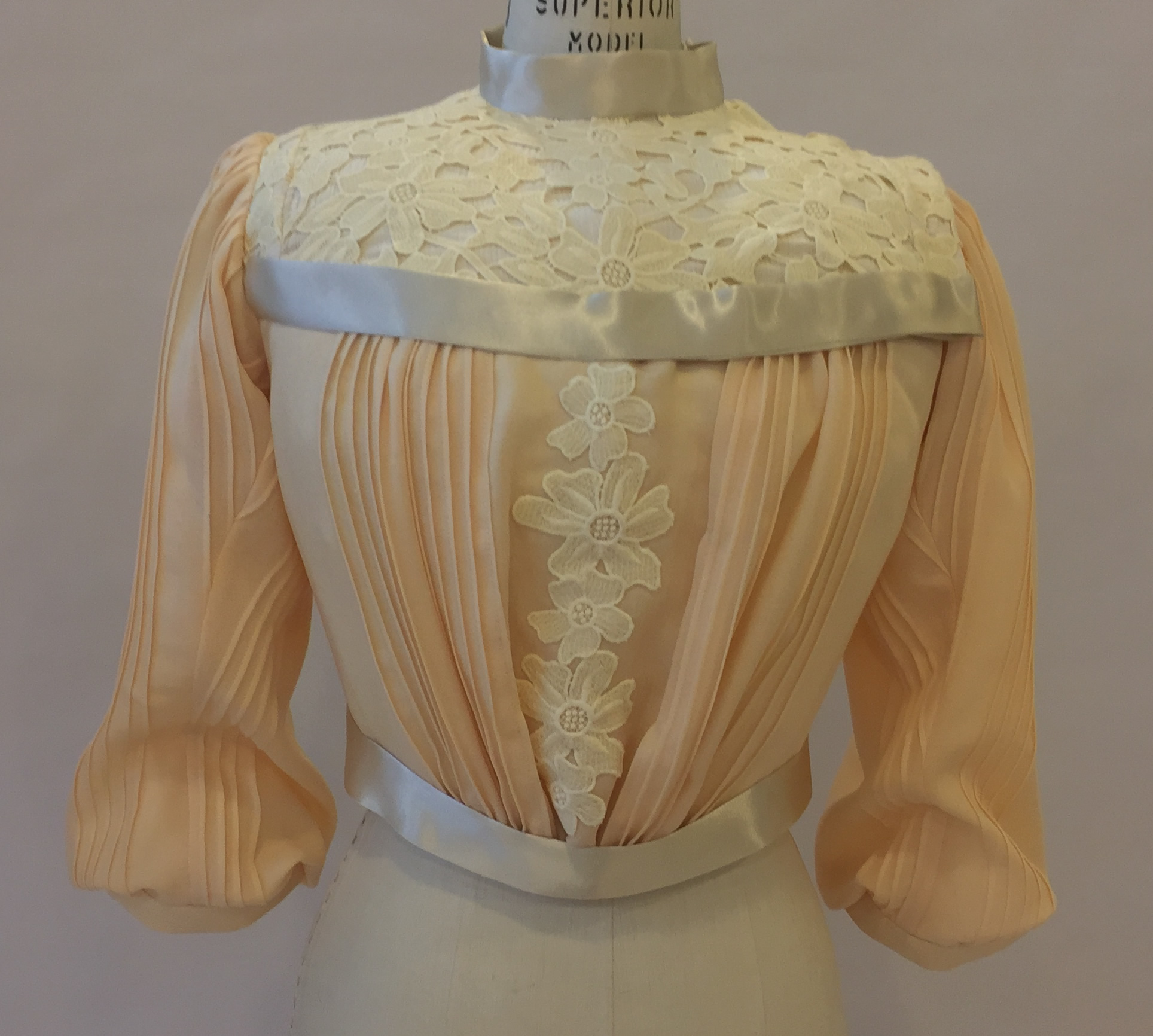 |
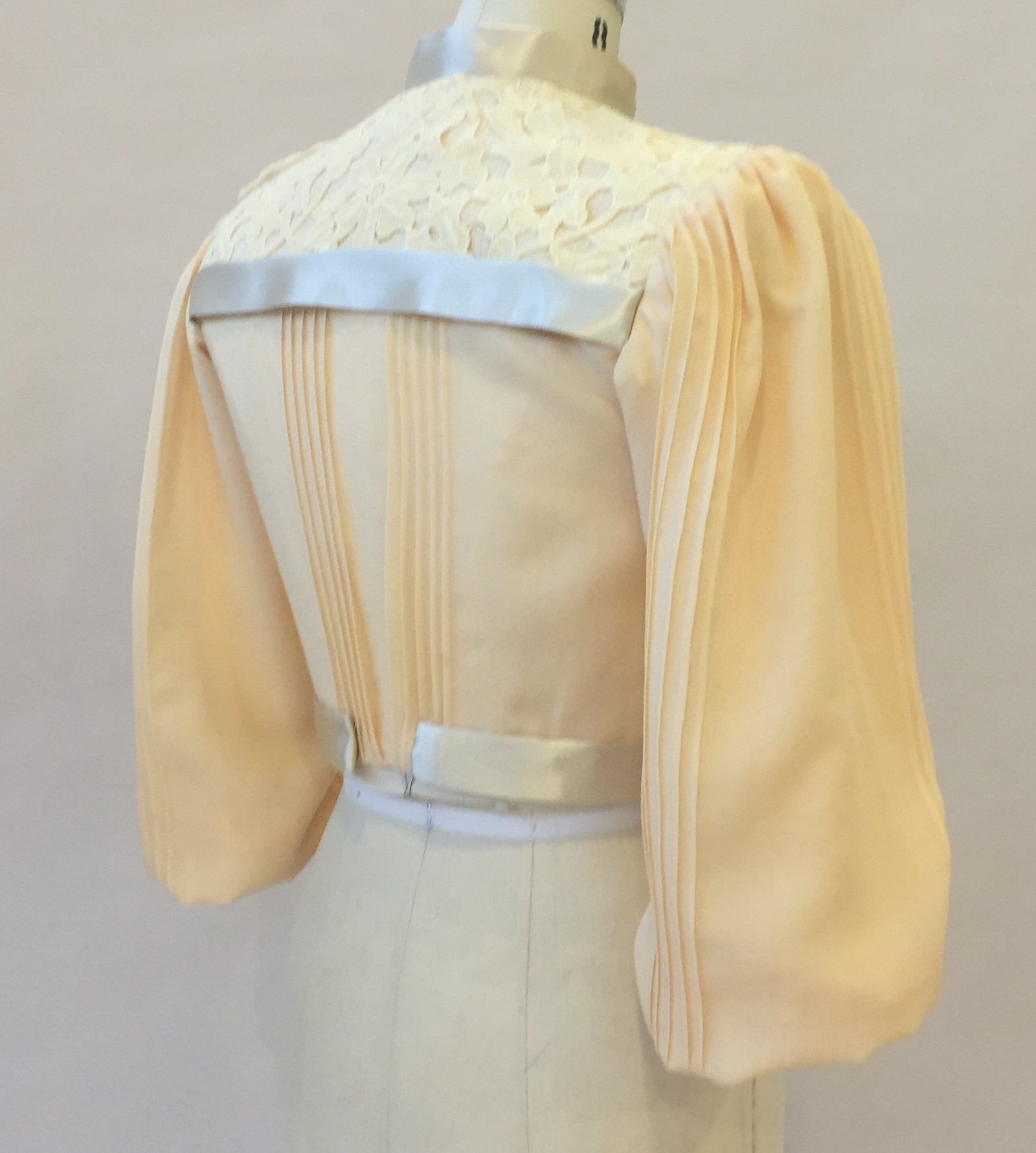 |
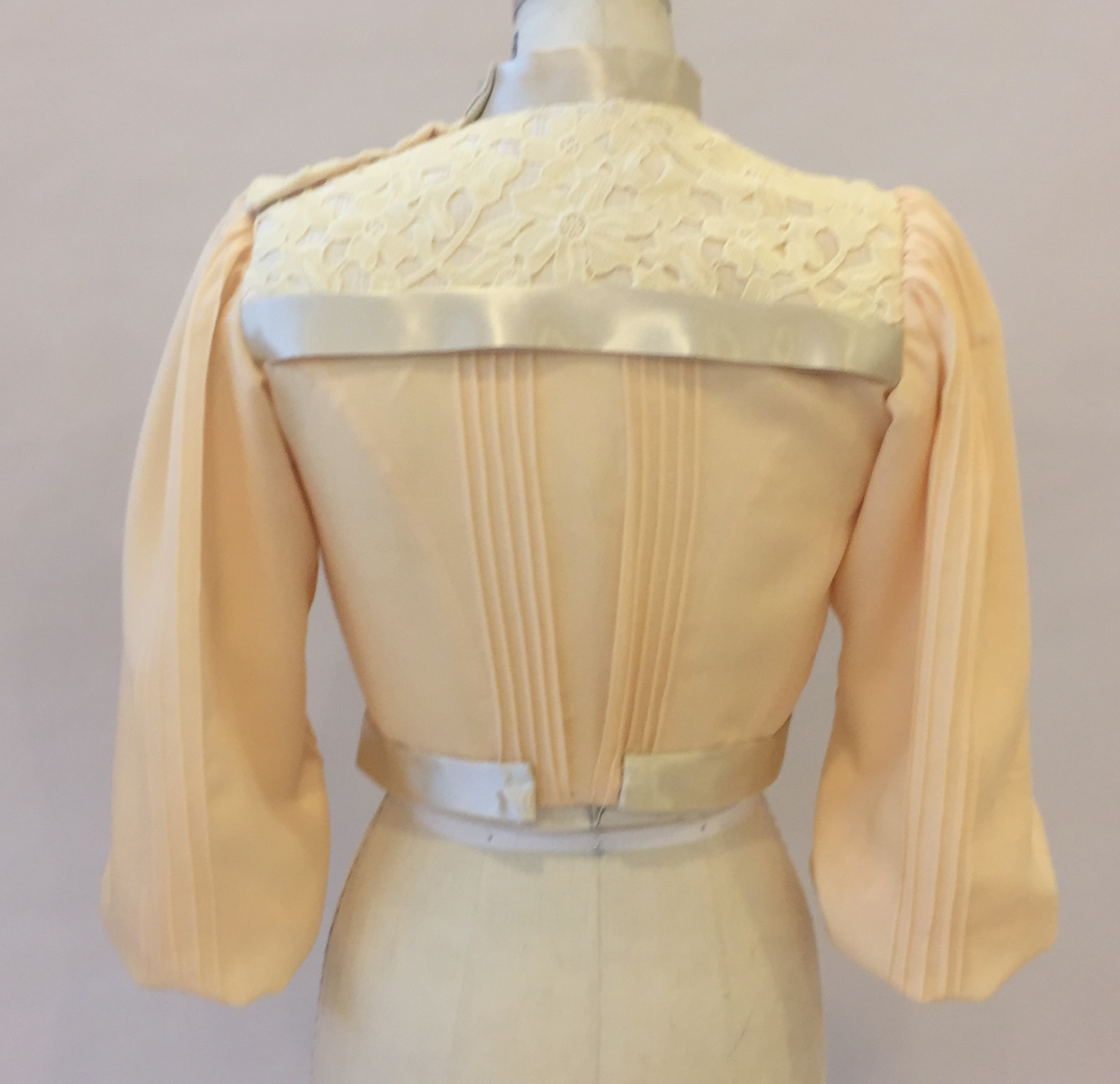 |
Scaling the vintage bodice up to a modern proportioned body, the reproduction is created for a figure with corseted measurements of: bust 40", waist 27.5", and front bodice length 17.75". The basic shape of each pattern piece is maintained while the length and width were increased accordingly. Rather than running a seam down center back, the center back piece was cut on the fold. The other piece that changed the most is the under sleeve; more ease was allowed than in the original bodice. Both the under sleeve and over sleeve patterns are updated with a built-in gusset for full range of movement.
Concerning construction, there are a few areas where construction methods differ. In the back of the under bodice, instead of finishing the back seams with a fake French seam after the bodice was initially sewn together, those seams are sewn with a traditional French seam. Related to the front under bodice, the darts are pressed open splitting the difference of the fullness to the front and side rather than pressing the entire dart to the front. Instead of using the dart as a casing for the bones, pressing the dart seam allowance open creates a centered location for bone tapes to be cross-stitched over each darts. Cross stitching the bones into the bodice, rather than using the darts as casings, which was typical for the time, allows the bodice to lay flat and not have twisting of the bones. The seams within the bodice that were left raw in the original bodice are serged to clean the edges in the reproduction. Within the sleeve, the wool is French seamed to clean the raw edge. This prevents fraying and makes a clean edge which can be seen from the outside because of the thinness of the wool. In the original, the hem was bound with a bias piece of the wool fabric. Because the wool breaks down through friction more easily, the hem in the reproduction is bound with bias broadcloth. Across the wool at the front yoke line, bias broadcloth is also used to clean where it had been left raw in the original. Lastly, instead of constructing the undersleeve cuff and over sleeve cuff separately, for the reproduction they are bound together.
Figure 4: Interior |
Figure 5: Closure |
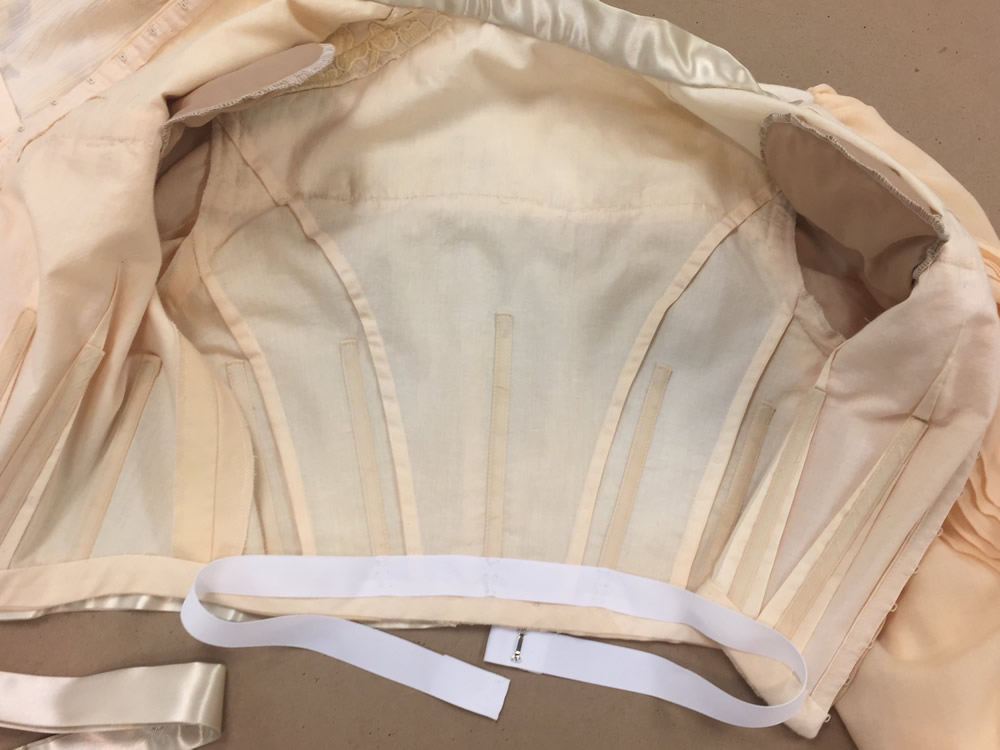 |
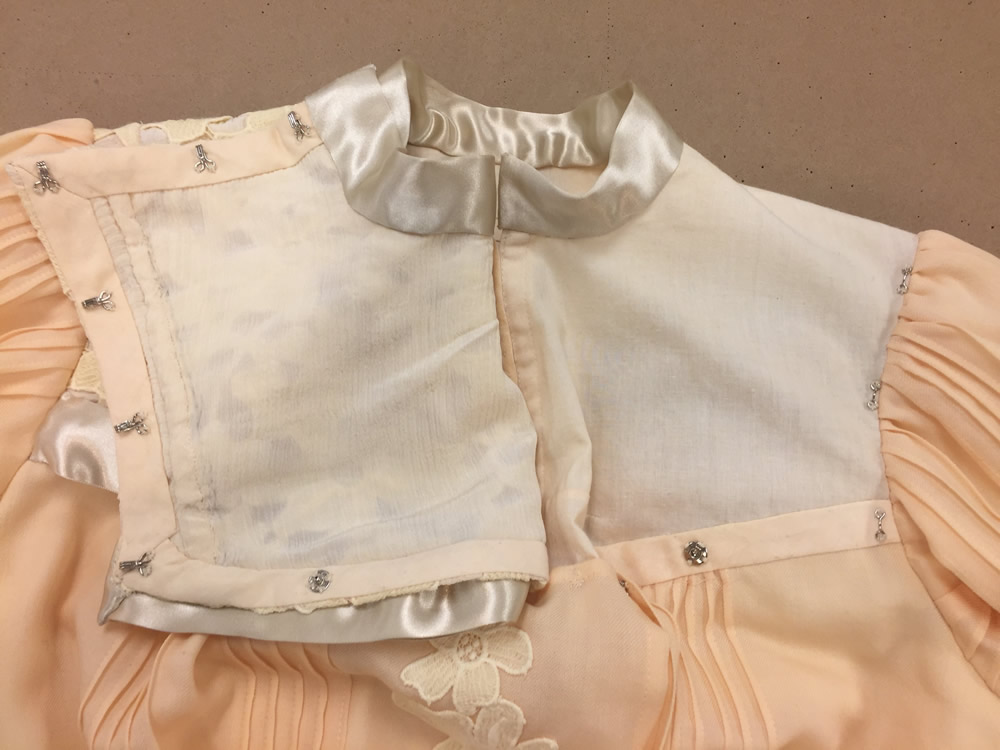 |
The closure placement between the original bodice and the modern one is similar. Hooks and eyes are used down the center front of the under bodice, but instead of individual hooks, hook and eye tape is used. Then the three hooks located under the pin tucks on the left side of the bodice are extra hooks to be dyed cream for the hook and eye tape, because the silver hooks were visible through the thinness of the wool. Additional hooks are added along the top left side of the center front flange as well as at the bottom of the yoke.
© Robin Ankerich, 2018

